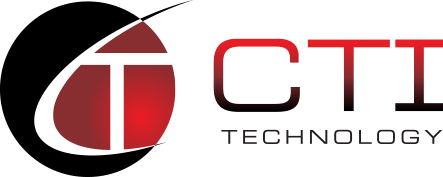7 Layers Of The OSI Model
The open systems interconnection (OSI) model is a reference explaining the flow of data over a network. It was developed back in 1984 by the International Organization for Standardization (ISO) to aid technology companies and organizations around the world with a framework that could act as the basis of their networking developments. The OSI creates a conceptual model by dividing a single version into abstract layers that act as separate communication modules. All these independent layers are then linked and used to send data from one node to the other.
There are seven layers in the OSI model, which include:
- Physical
- Data link
- Network
- Transport
- Session
- Presentation
- Application
Each layer serves the one above it and it’s served by the one below it. The first three layers (Physical, data link and network) are concerned with the hardware part of the network. The next four ( transport, session, presentation and application) are software related and are concerned with completing the communication process in the network.
1). The Physical Layer
The physical layer transmits individual bits between nodes using a physical medium or wireless connection. It lays the foundation for the OSI model and defines the connection, signal type and the media to be used. The physical layer uses components such as cables, network interface cards (NIC), antennas, pins, and adapters.
Its major functions include:
- Defining topology, i.e., the physical layout of all the devices in the network.
- Stating the direction of the transmission, whether in simplex mode, half or full-duplex mode.
- Stating the data transmission rate by the duration of bits and how many are to be transmitted per second
- Defining the functions of all devices in the network and their physical characteristics during a transmission
2). Data Link Layer
The data link layer ensures synchronization in the data flowing from the physical layer. It also detects all potential errors available and converts the raw transmission to an error-free and reliable link. This layer has two parts, the logical link control (LLC) and the media access control (MAC). Logical link control performs error checking, identifies network protocols and synchronizes frames, while media access protocol connects, defines permissions and indicates the devices to receive and transmit data.
Its primary functions in the OSI model include:
- Breaks bits of data into data frames.
- Ensures that the receiving node sends an acknowledgment frame in cases of a reliable connection. Frame retransmission is done in cases of an absence of these acknowledgment frames.
- Controls access to any shared channel in the case of broadcast networks.
3). The Network Layer
This layer is in charge of the transmission of data packets across the nodes. It finds the shortest viable path between the host and the receiving node and selects it. Once the network layer receives data packets from the data link layer, it identifies whether the data is defined for the localhost or a different host. It either sends the packet to a higher layer or back to a lower layer, depending on the host defined.
The network layer’s major functions include:
- Assigning physical addresses locally.
- Controlling congestion by providing mechanisms.
- Tackling issues such as transmission time, transmission delays, and avoidance of jitters.
4). The Transport Layer
The transport layer determines the amount of data to send, the rate to be used, and when the data is to be sent. It is the first layer in the OSI model to execute a true source-to-destination data flow, as it is common that node to node data delivery occurs at this level. It uses service port addresses to ensure data reaches the correct locations in end-to-end delivery.
Its primary functions include:
- Delivering data from a specific node’s process to a specific process of another node.
- Identifying errors such as duplication, damaged or lost packets, and also providing correction techniques for these errors.
5). The Session Layer
When nodes communicate with each other, the session layer checks the network requests and determines the availability of the resource in the system. It also establishes, manages, synchronizes, and ends sessions between nodes’ application processes.
Its major functions include:
- Controlling the dialogues by allowing systems to communicate in half or full-duplex mode.
- Managing tokens by preventing two users from simultaneously attempting a similar critical operation
- Adding synchronization points in long communications, ensuring that data streams are received and acknowledged successfully up to the checkpoints.
6). The Presentation Layer
The presentation layer is also known as the translation layer as it ensures that the information or data is presented in the application layer in an understandable format. It can also handle the decryption and encryption that the application layer may require.
The major functions of the presentation layer include:
- Encoding data from user-dependent formats to common formats or vice versa to enable communication among dissimilar systems.
- Encrypting and decrypting sensitive data before it is transmitted over a common channel with other data.
- Compressing data to reduce the bits and increase the transfer rates, usually the large multimedia files.
7). The Application Layer
This is the layer where the end-users or the nodes interact with the software application. An interface is connected to the network, which then enables the user to see and read data in the set formats.
Its primary functions include:
- Providing a virtual network terminal allows a user to log on to any remote host on the network.
- Providing email service.
- Helping to retrieve global devices and information by providing access to distributed resources.
OSI supports inter-process communication, ensuring that any open system will connect with any accessible framework easily. It clearly defines the protocols, interfaces, and services and also explains in which layer those services are supported. The ISO model has exceptionally private protocols, which can be returned quickly with other appropriate protocols. It is also a general model and provides connectionless and connection-oriented services.
Due to its abstract layered nature, a change in one layer will not affect the other layers or the complete model in a big way, making it very efficient. Its architecture also gives it more security as all features do not accumulate in an individual layer, which also improves its flexibility. If you have questions or require help with the OSI model, don’t hesitate to contact CTI technology. We offer very customized and managed IT solutions for any business. Contact us today for more information.
Why Is CTI Technology The Best Choice For IT Services In The Chicagoland Region?






















